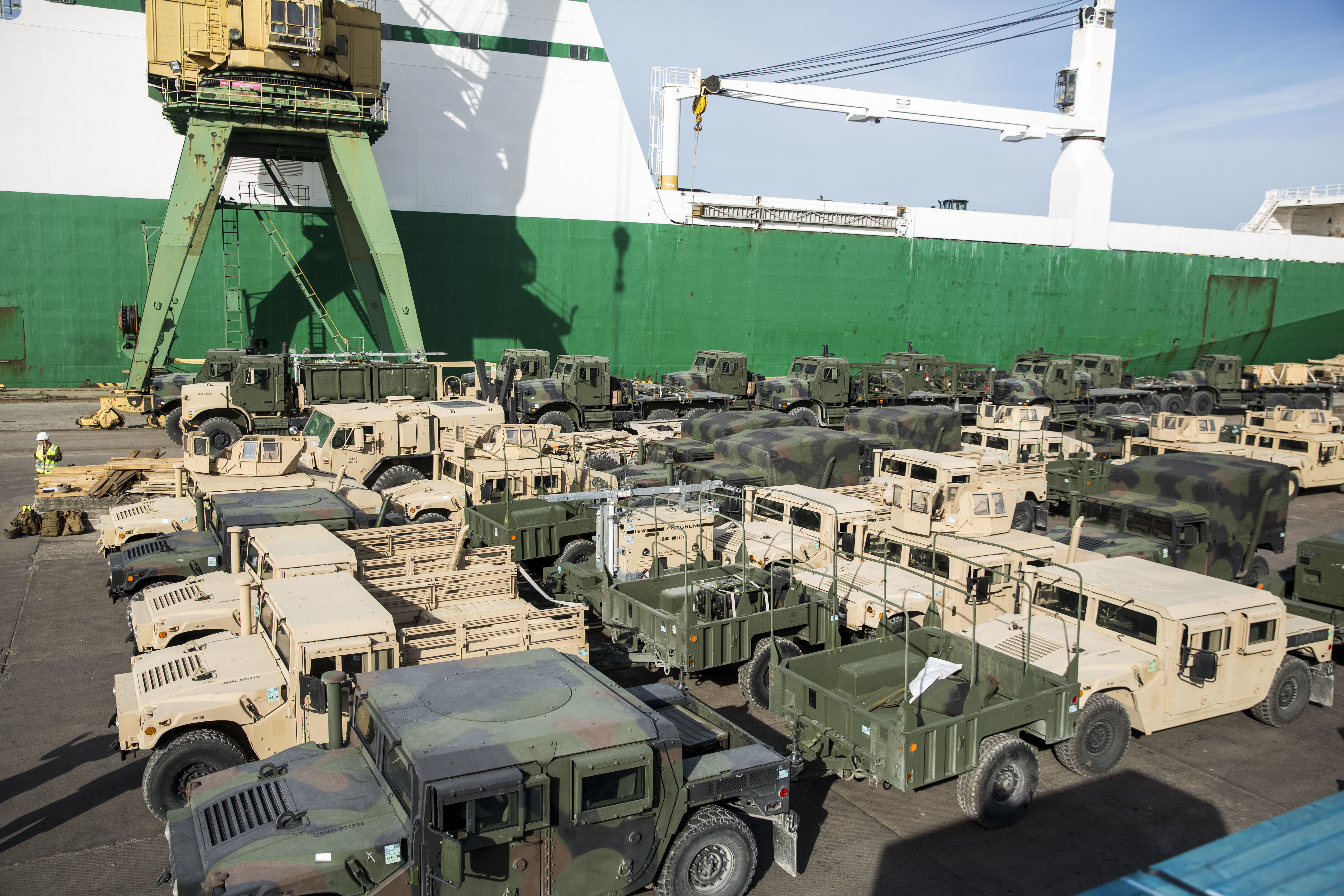
WASHINGTON, D.C. – Rep. Rob Wittman (R-Va.) wants to know why the U.S. military’s surge sealift capability has yet to augment its aging fleet’s capabilities with used cargo ships.
Two years ago Congress authorized the purchase of two used roll-on/roll-off ships to improve the military’s ability to deliver military equipment and supplies to forward locations. As of now, no used ships have been purchased, Wittman said last week while talking after an appearance at the McAleese and Associates Defense Programs Conference.
On Wednesday, during a scheduled joint hearing of the House Armed Services subcommittees on seapower and projection forces, Wittman intends to ask the U.S. Maritime Administration and U.S. Transportation Command leadership about any progress purchasing the cargo ships that would be used to transport vehicles.
“You’ve had this authorization for two years to go buy these two used ships, they’re out there, it’s not like you have to go shopping for them, they’re out there and you have additional authority to buy up to five more,” Wittman said last week. “I wish we would get a good explanation, but there is none.”
The idea of purchasing used cargo ships would be an economical way to quickly improve the quality of the military’s sealift capability for a fraction of the cost of building news hips, Army Gen. Steve Lyons, the commander of U.S. Transportation Command, and retired Rear Adm. Mark Buzby, the administrator of the U.S. Maritime Administration told lawmakers during a hearing before the same subcommittees a year ago.
Since then, TRANSCOM and MARAD tested the ability of the nation’s maritime Ready Reserve Force to sail on short notice in an exercise called a “Turbo Activation.” During the September 2019 exercise involving 28 cargo ships, only about 40 percent of the vessels deemed ready were able to leave port, Buzby reported in January at the 2020 Surface Navy Association Symposium.
“The Turbo activation ought to be sobering for everybody,” Wittman said.
A RO/RO ship with 15 years of service – roughly the expected mid-life of such a ship – runs about $60 million, Wittman said. The cost of a new ship is about $500 million per hull. While a new vessel would last longer, the current age of ships in the fleet is about 45 years – already at the end of the expected lifespan.
“Buy the doggone things,” Wittman said. “I don’t know what internally is keeping the Navy this from happening.”





